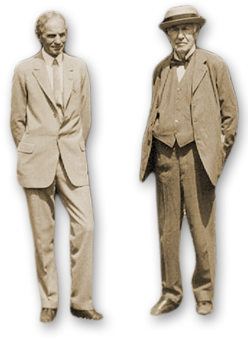Easier to Eat than Pronounce: Syzygium samarangense or Wax-Jambu
June 9, 2024
By Karen M. Maxwell, Horticulture Programs Coordinator and Horticultural Specialist
Like our Lychees, the Wax-Jambu is a heavily fruiting tropical tree, but due to the short shelf life of the fruit, commercialization is impractical; however, visitors to the Estates will soon have the opportunity to enjoy this great summer fruit.
Wax-Jambu is a cousin of the Rose Apple (Syzygium jambos), which was in Edison’s landscape in the 1930s according to historical plant inventories. As we continue our efforts to establish unique collections of plants, we have added the Wax-Jambu to our array of tropical fruits. Though the flower and fruit of Rose Apple may be prettier, the fruit of Wax-Jambu is larger, sweeter and more delicious! Hopefully, you will soon discover this for yourself at our upcoming Farmers Market.
Native to tropical Asia and the Solomon Islands, this crooked-stem tree, or more like a large shrub, is capable of producing up to 700 fruits per season after only five years in the ground. It is this production quantity that makes this tree very popular in eastern hemisphere cultures. Its leaves are aromatic when bruised. The color of the ripe fruits may range from whitish, to pinkish to red, but one can always determine ripeness by observing a glossy, and yes, waxy, outer skin.
Best picked by hand, the bell-shaped fruit has thin skin that is easily bruised, and the fruit should be consumed fresh or within three days of picking. It is a popular ingredient in tropical fruit salads. This coastal rain forest tree may flower and fruit as many as three times a year once mature, preferring a long dry spell after a long, wet period. Not to imply that the tree is drought tolerant, it will always enjoy supplemental watering during extended dry periods. The best quality and quantity of fruit will be borne from trees that are grown in richer soils and fed twice a year – once when flowering and again after harvest.
Fruits should be ripe approximately 30 days after anthesis (an’-thuh suhs) – the time when flowers are fully opened and ready for pollination – usually performed by honeybees. The fruit is easy to eat, and it is easier to say Wax-Jambu than trying to spit out Syzygium samarangense. The plant is in the same family as the invasive Java Plum or Jamoon Plum; however, the Wax-Jambu is not an invasive species but a distinctly tropical fruit-bearing tree. Dr. Henry Nehrling, a renowned horticulturist and consultant to Thomas Edison, grew Wax-Jambu successfully in Naples, almost 100 years ago.
As one might surmise, its species name is a town in tropical Asia on the island of Java, so this fruit sometimes carries the common name Java Apple; the genus comes from the Greek meaning “united” as some petals form a cap on plants. Jambu refers to jambolanum, a compound found in the seeds and used in folk medicine to treat diabetes. Edison and Ford Winter Estates currently has two trees planted, one a variegated variety which has yet to produce flowers or fruit. The other is currently loaded with young fruit.
The Wax-Jambu will grow to 35’ or 50’ in cultivation, but we will probably keep it pruned well below that height to access its fruit. In its native lands, the fast-growing tree produces a dependable source of construction-grade wood. Keep any fallen fruits cleaned up to mitigate fruit fly infestation. It is part of the extensive Myrtle (Myrtaceae) family of flora that includes the Bottle Brush, Pineapple Guava, Stoppers, Golden Penda, Allspice and Jaboticaba – all specimens that can be viewed here at the Estates.


